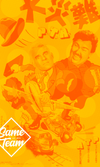You’re shipping features. You’re holding meetings. You’ve got a team that shows up, engages in Slack, and mostly hits their deadlines. But still—something feels off. Like you’re dragging the team uphill, trying to will momentum back into existence. Everyone's technically doing their job, but the spark is gone. Conversations are quieter. Energy is flatter. And you can't quite put your finger on why.
It’s easy to mistake that drag for burnout. And sometimes, it is. But just as often, it’s something else—something quieter, more structural. It’s drift.
Drift doesn’t announce itself. It doesn’t come with alarms or spectacular failures. It sneaks in. One missed decision here. One vague handoff there. A growing gap between what you think you said and what people actually heard. At first, the team still delivers. But slowly, quietly, alignment erodes. Trust thins. And you’re spending more and more time cleaning up confusion no one wants to admit exists.
You ask for updates and get slide decks. You hold strategy meetings and leave with more questions than answers. Everyone’s showing up—but no one’s really showing their cards. The signals are subtle: polite meetings, repeated clarifications, tension you can’t name. What looks like cohesion on the surface is actually a system that’s starting to buckle.
And here’s the truth most leaders don’t want to face: drift isn’t about effort—it’s about structure. You can’t hustle your way out of misalignment. More standups won’t fix it. “Doubling down” won’t fix it. Motivational speeches won’t fix it. Because the issue isn’t motivation—it’s miscommunication. It’s muddled collaboration. It’s culture that can’t hold under pressure.
The real cost of drift shows up in invisible ways: in project rework, in team members quietly checking out, in burnout that feels more like resignation than exhaustion. And it compounds—misalignment leads to burnout, and burnout deepens misalignment. You can’t fix one without fixing the other.
This is where most leaders hit the wall. They feel the weight but can’t locate the source. We get rewarded for delivery, not diagnosis. We're trained to go faster, not pause and examine the system. By the time you spot the drift, it’s already cost you clarity, momentum, and maybe even a few good people.
That’s why we built Teamangle.
Not as a survey. Not as a personality quiz. But as a structural diagnostic system that shows leaders what’s really going on beneath the surface—across communication, collaboration, and culture. Not in vague sentiment scores, but in clear, observable patterns of team behavior. It gives you a map—what’s working, what’s fraying, and where things are about to snap.
The Teamangle Diagnostic doesn’t just tell you how people feel—it shows you how the team functions. Where decisions stall. Where ownership disappears. Where trust is leaking through the cracks. It doesn’t assign blame. It reveals drag. And that visibility is what gives leaders a real path forward—one that’s grounded in reality, not gut instinct.
You don’t need a crisis to use it. You just need the honesty to say: “Something feels off, and I’m ready to see why.” That’s the moment this system was built for.
Because drift wins when you don’t name it. But once you see it? You can fix it—fast.
T L ; D R — Teams don’t always fall apart in dramatic ways. More often, they drift—quietly—through misaligned decisions, vague communication, and culture that can’t hold under pressure. It’s not a motivation issue. It’s structural. The Teamangle Diagnostic helps leaders detect that drift early and address it with clarity—not assumptions. If your team feels heavy even while delivering, don’t guess. Diagnose.






